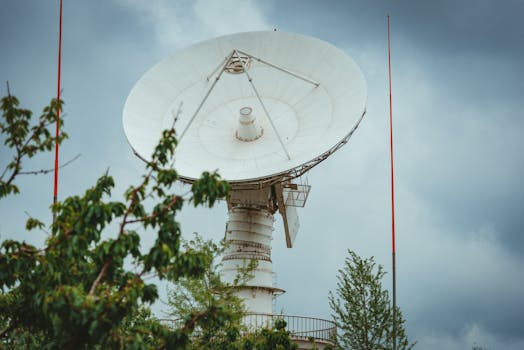
The Future of Connectivity: Latest Breakthroughs in Satellite Telecommunications
The Future of Connectivity: Latest Breakthroughs in Satellite Telecommunications have revolutionized the way we communicate, enabling faster and more reliable connections worldwide. With the increasing demand for global connectivity, satellite telecommunications have become a vital component of modern communication systems. In this article, we will explore the latest breakthroughs in satellite telecommunications and their impact on the future of connectivity.
Satellite telecommunications have come a long way since the launch of the first commercial communications satellite, Intelsat 1, in 1965. Today, satellite telecommunications play a critical role in providing connectivity to remote and underserved areas, as well as enabling global communications for industries such as aviation, maritime, and emergency services. The latest breakthroughs in satellite telecommunications have focused on improving the speed, capacity, and reliability of satellite connections.
One of the significant advancements in satellite telecommunications is the development of high-throughput satellites (HTS). HTS use advanced technologies such as spot beams and frequency reuse to increase the capacity of satellite connections. This enables the provision of high-speed broadband services, including internet, voice, and data communications, to a wide range of users. HTS have been deployed by several satellite operators, including Intelsat, SES, and ViaSat, and have significantly improved the quality and availability of satellite connections.
Another breakthrough in satellite telecommunications is the use of advanced propulsion systems, such as electric propulsion and Hall effect thrusters. These systems enable satellites to maneuver more efficiently and extend their lifespan, reducing the need for frequent replacements and minimizing the risk of satellite failures. Additionally, the use of advanced materials and manufacturing techniques has enabled the development of smaller, lighter, and more powerful satellites, which can be launched at a lower cost and with greater flexibility.
The development of satellite constellations is also transforming the future of connectivity. Satellite constellations involve the deployment of multiple satellites in low Earth orbit (LEO) to provide global coverage and connectivity. Companies such as OneWeb, SpaceX, and Amazon Kuiper Systems are developing satellite constellations to provide high-speed, low-latency connections to users around the world. These constellations have the potential to revolutionize the way we communicate, enabling faster and more reliable connections for a wide range of applications, including internet of things (IoT), 5G, and cloud computing.
Impact on the Future of Connectivity
The latest breakthroughs in satellite telecommunications are having a significant impact on the future of connectivity. With the increasing demand for global connectivity, satellite telecommunications are playing a vital role in providing connectivity to remote and underserved areas. The development of HTS, advanced propulsion systems, and satellite constellations is enabling faster, more reliable, and more affordable connections, which are essential for a wide range of applications, including education, healthcare, and emergency services.
The use of satellite telecommunications is also enabling the development of new technologies and services, such as IoT, 5G, and cloud computing. Satellite connections can provide the necessary bandwidth and latency to support these applications, enabling new use cases and business models. Additionally, the development of satellite constellations is enabling the creation of new industries and job opportunities, such as satellite manufacturing, launch services, and ground equipment installation.
Challenges and Opportunities
Despite the significant advancements in satellite telecommunications, there are still several challenges and opportunities that need to be addressed. One of the major challenges is the issue of space debris, which can pose a significant risk to satellite operations and the environment. The development of sustainable and responsible satellite operations is essential to minimize the impact of space debris and ensure the long-term viability of satellite telecommunications.
Another challenge is the need for greater investment in satellite infrastructure and technology. The development of new satellites, launch vehicles, and ground equipment requires significant investment, which can be a barrier to entry for new players. However, this also presents an opportunity for innovation and entrepreneurship, as new companies and technologies emerge to address the growing demand for satellite telecommunications.
The future of connectivity is rapidly evolving, and satellite telecommunications are playing a vital role in shaping this future. The latest breakthroughs in satellite telecommunications have enabled faster, more reliable, and more affordable connections, which are essential for a wide range of applications. As the demand for global connectivity continues to grow, satellite telecommunications will remain a critical component of modern communication systems, enabling new technologies, services, and industries to emerge.




